In Photos: Beautiful Cactus Flowers Signal Spring Is Here
Most scientists today agree that North America has four distinct desert regions: the Great Basin, the Mojave, the Sonoran and the Chihuahuan. The subjective delineation of one from another is based primarily upon the different species of plants that can be found growing in each region. When the cacti found within these four arid lands begin to bloom in late March and April, spring has once again returned to these North American deserts.
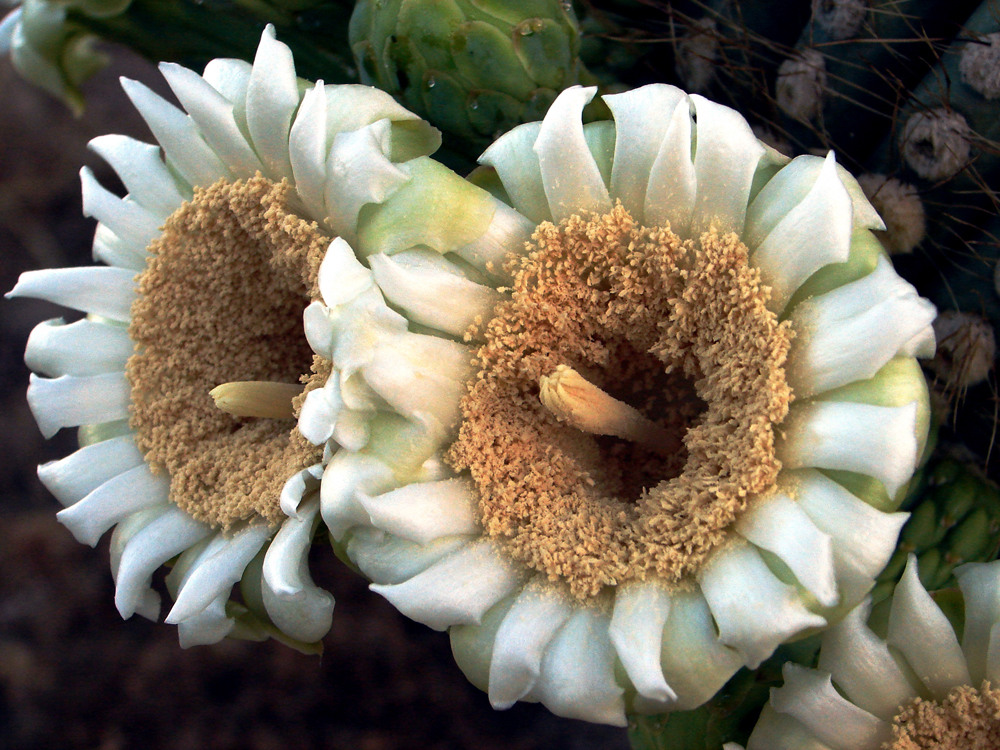
Each desert region's pattern of precipitation, elevation and soil characteristics influence the types of floristic growth, which can blur the line as to where one desert begins and another ends. (Credit: Linda & Dr. Dick Buscher)
Related: Why Do Flowers Close Up at Night?
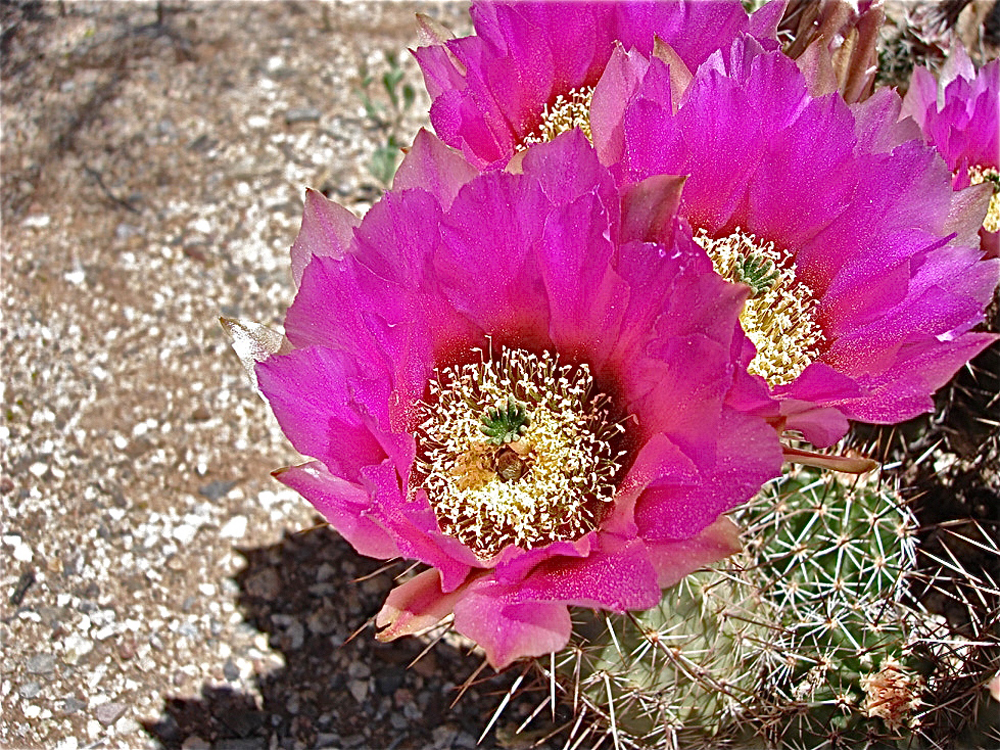
Cactus flowers are showy and usually quite large. They are unique flowers because they have dozens of stamens and petals, rather than the usual 5 to 10 of each that are most commonly found with flowering plants. The ovary of the cactus flower is buried deep in the flower's interior. Shown here is the bloom of the Englemann’s hedgehog (Echinocereus engelmannii). Commonly known as the Santa’s cactus and the strawberry cactus, the Englemann’s hedgehog is commonly found in the Mojave and Sonoran Deserts, at elevations between 650 and 8,000 feet (200 to 2,400 meters). Hedgehogs are one of the first of all the cactus species to bloom each spring. (Credit: NPS)
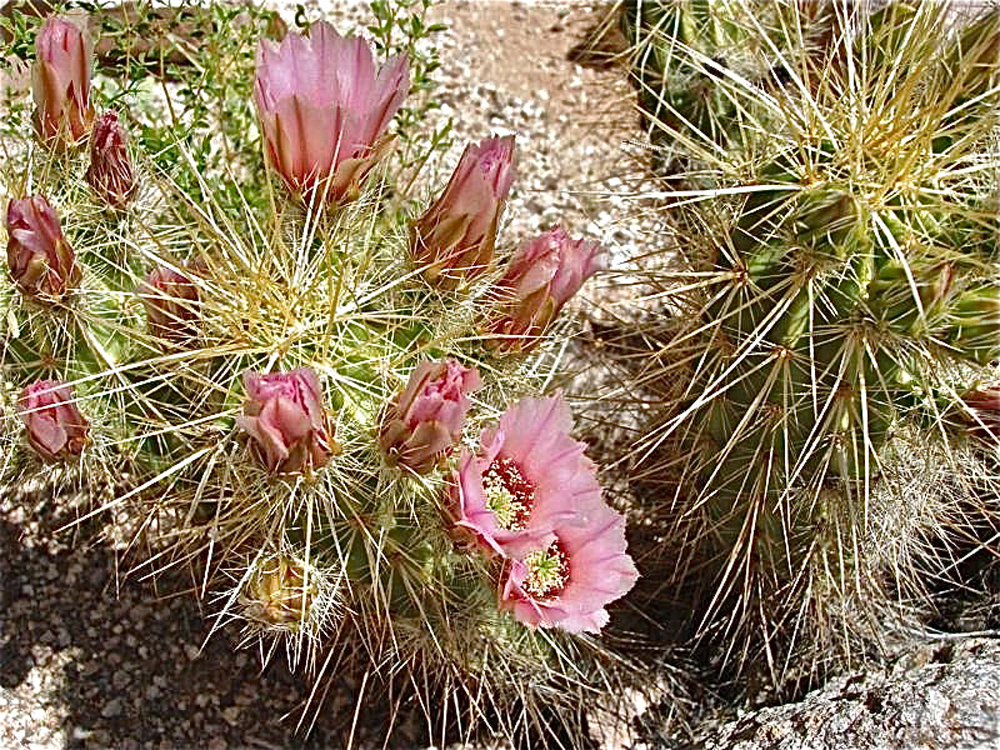
The blooms that are light pink with red centers are the relatively rare Nichol’s hedgehog cactus (Echinocereus nicholii), which has a more limited natural range than its cousin, the Englemann's hedgehog. These spring-flowering beauties are found only in the Sonoran Desert region of southern Arizona and northern Mexico. Known commonly as the Golden hedgehog, the flowers of these long spine clusters brighten the dry washes and sunny hillsides where they are found. (Credit: NPS)

The prickly pear cactus is the only cactus species found in all four North American deserts. More than 12 distinct species of prickly pear cactus grow, bloom and thrive in the varied desert environments, and they are able to survive even the cold temperatures of the Great Basin Desert, the largest desert in the United States. Prickly pear cacti are part of the genus Opuntia. They have modified stems that resemble flat pads, which are the sites where photosynthesis and water storages occur and flowers are produced. The pads of almost all prickly pear cacti are covered with large spines that are actually the plant’s modified leaves. Just above the growth point of the regular spines is a cluster of tiny, barbed spines known as glochids.
Glochids are unique to all members of the Opuntia genus. Flowers of prickly pear cacti can be red, orange, yellow and even purple. The bloom of the Engelmann’s prickly pear (Opuntia engelmannii) is shown here. (Credit: NPS)
Sign up for the Live Science daily newsletter now
Get the world’s most fascinating discoveries delivered straight to your inbox.
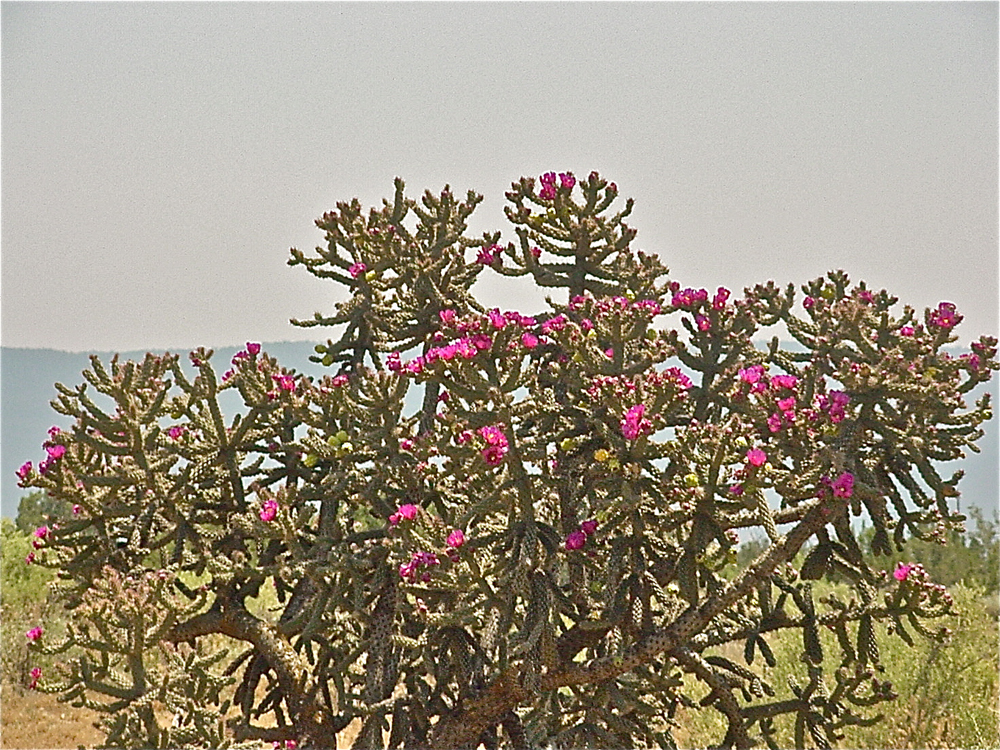
Other members of the Opuntia genus are the 20 species of cholla cactus that are found in the three hot North American deserts — the Mojave, Sonoran and Chihuahuan. These scrublike cacti have cylindrical stems that carry out water storage, flower production and photosynthesis, and grow in segmented joints. Shown here, in full springtime bloom, is a common Tree cholla (Cylindropuntia imbricata). (Credit: Linda & Dr. Dick Buscher)
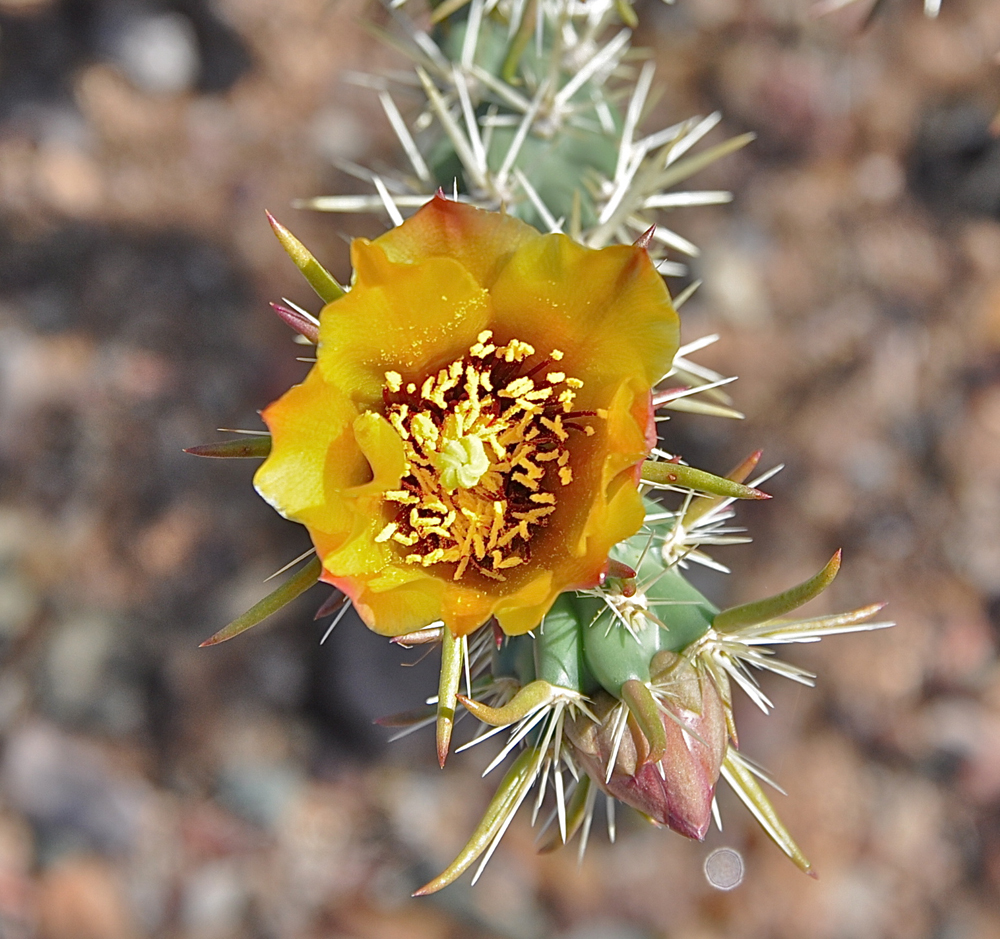
Unique to the cholla cactus are the papery sheaths that cover their many spines, which are actually modified leaves. Glochids are also found on all varieties of cholla cactus. Just like the prickly pear cactus, the bloom of this Staghorn cholla (Cylindropuntia versicolor) can be a variety of colors, including various shades of red, yellow and green. Staghorn cholla is also known by a second common name, the Deerhorn cholla. (Credit: Linda & Dr. Dick Buscher)
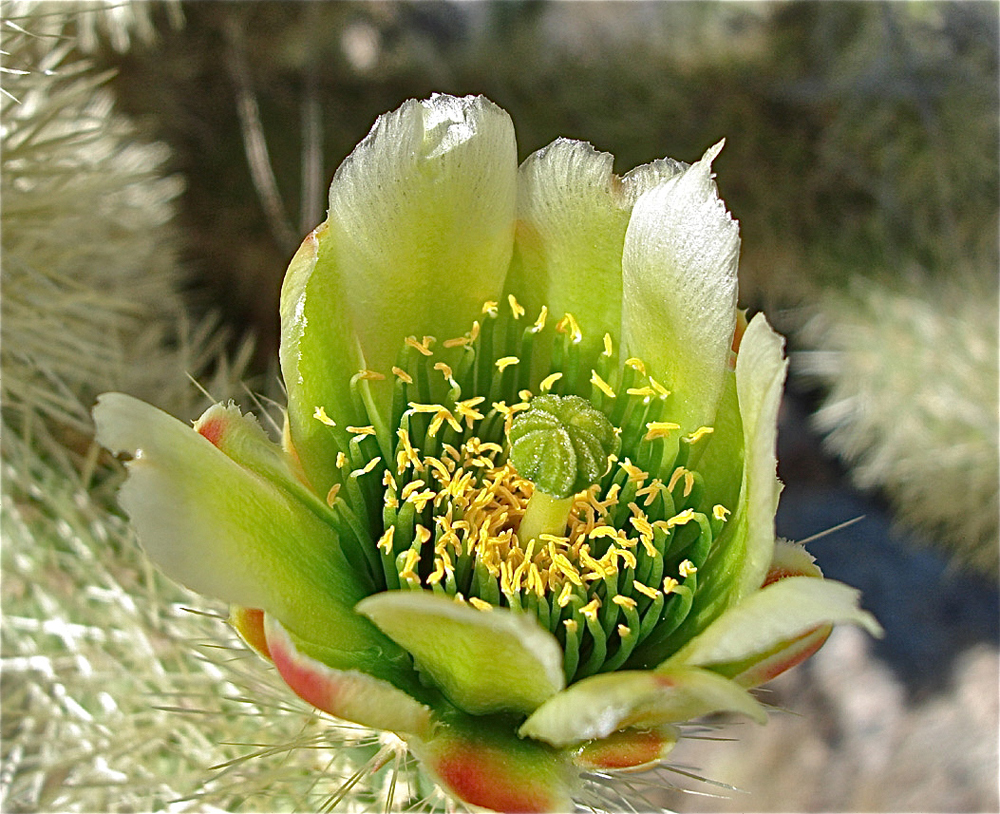
Another common species of cholla cactus found in the three hot deserts is known as the Teddy Bear Cholla (Cylindropuntia bigelovii). The segmented joints of this cholla appear from a distance to be fuzzy, like a teddy bear, and can be easily broken off. This characteristic inspired its second common name, Jumping Cholla. Teddy Bear cacti can grow to a height of 2 to 3 feet (0.3 to 0.9 m). Although the segments have no mechanism to actually jump, they do readily attach themselves to the fur of any animal, or the pant leg of a human, that brushes up against them. These are both very painful and difficult to remove. Forests of Teddy Bear Cholla cacti can cover acres of desert land, making some regions almost completely impassable. Shown here is the yellow-green springtime flower of the Teddy Bear cholla cactus. (Credit: NPS)
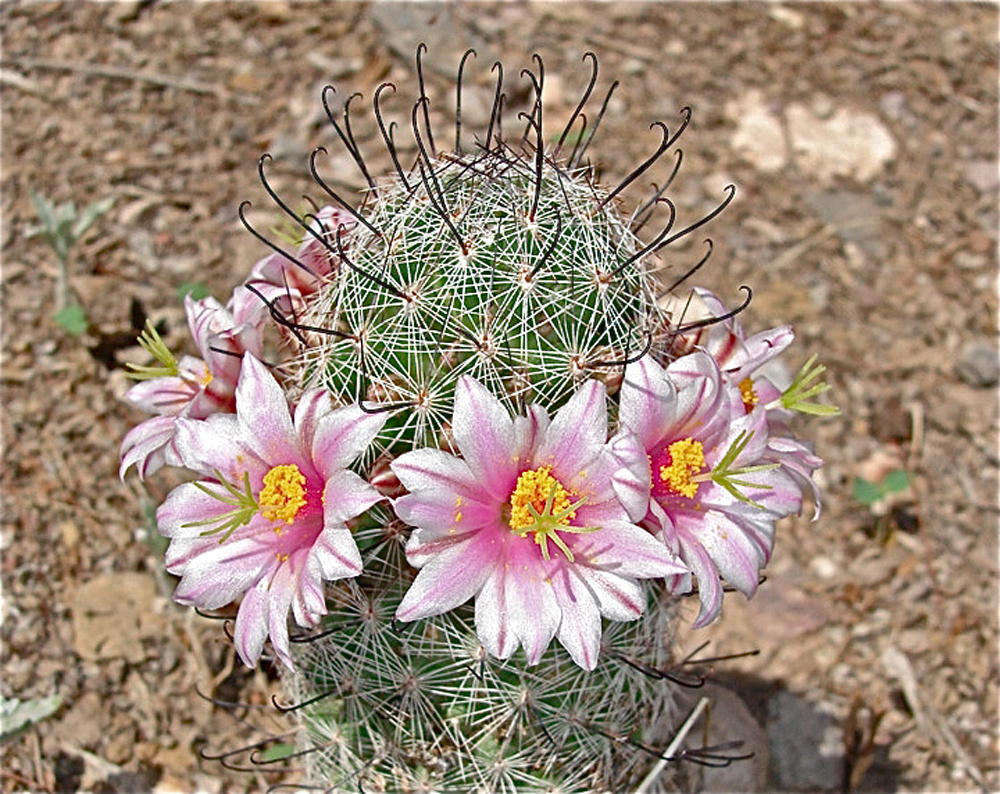
A small but very showy cactus found in the North American deserts is the Fishhook Pincushion cactus (Mammillaria microcarpa). These small, cylindrical cacti grow only to a height of about 6 inches (15 centimeters), and are protected by their many long, hooked spines. Even though they are small in stature, their large flowers, in shades of red, pink and orange, make for a spectacular display of color along the typically brown desert floor. (Credit: NPS)

The barrel cactus is commonly found in the three hot North American deserts. The two genera of barrel cactus, Echinocactus and Ferocactus, are made up of more than 60 different species. These squatty, tubular-shaped cacti typically grow to be 2 to 4 feet (0.3 to 1.2 m) in height, and measure 16 to 30 inches (41 to 76 cm) across. Individual cacti have been known to grow 10 feet (3 m) high. A species of the genus Ferocactus, shown here, is so named for the massive clusters of rigid spines that cover the fleshy barrel-shaped plant. The name "Ferocactus" comes from Latin and translates to mean "fierce cactus." (Credit: NPS)
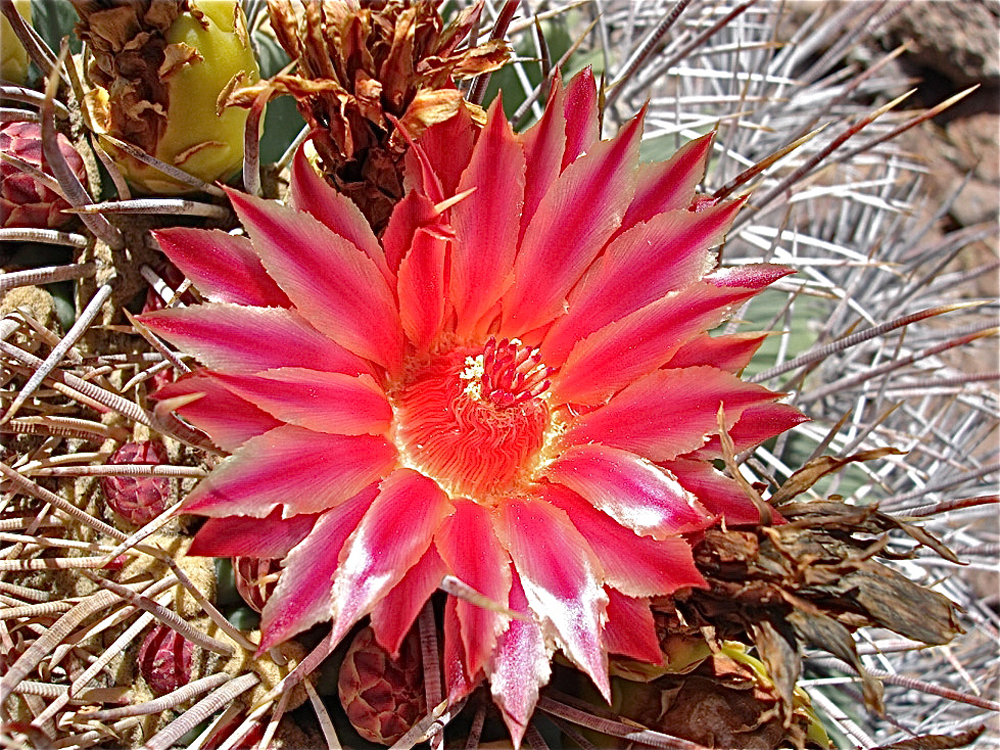
Barrel cacti are spectacular bloomers, with large red, yellow, orange or purple flowers that begin to bloom each year in mid-April. The fishhook barrel cactus (Ferocactus wislizeni), shown here, is so named for the many hooked spines that cover the cactus, providing protection from hungry animals and shade from the blisteringly hot summer sun. The fishhook barrel cactus is one of the more common barrel cacti of the North American deserts. Older species often grow pointing southward, giving rise to the nickname "compass barrel." (Credit: NPS)
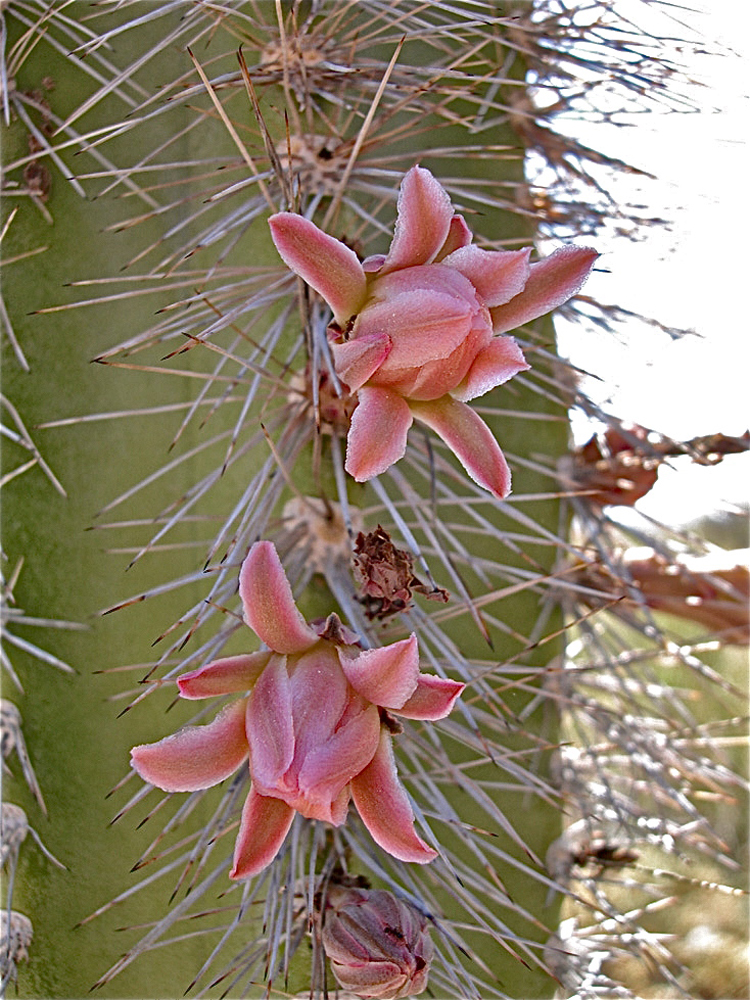
The Senita cactus (Lophocoreus schottii) is one of the multi-stemmed columnar cacti found in the Sonoran Desert of northern Mexico and Baja California. Their stems can grow to be 15 feet (4.6 m) high and 8 inches (20 cm) in diameter. Stems of mature plants are covered with long, stiff, grey spines, which inspired its common name, "Old Man cactus." During the hot summer months, the beautiful pink flowers open after sunset and close before the following dawn. A mature Senita cactus can produce upwards of 3,000 flowers during the 3- to 5-month blooming season. The Senita moth, Upiga virescens, specializes in the pollination of the cactus' blooms. In fact, all the life stages of the moth are associated with the cactus in their mutualistic relationship. Shown here are the closed, morning blooms of the Senita cactus. (Credit: NPS)
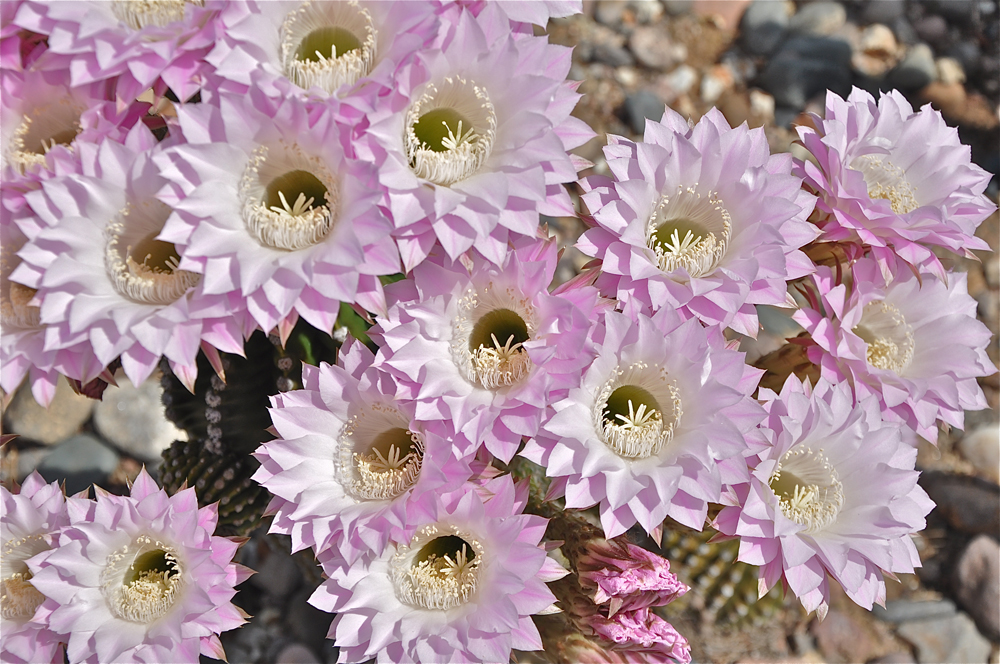
Some of the columnar night-blooming cacti indigenous to central Mexico are used as landscaping plants for southwest homes and businesses. Their spectacular blooms remain open only one night and close by noon the following day. But, the many large, showy flowers are a common favorite throughout the desert regions. (Credit: Linda & Dr. Dick Buscher)
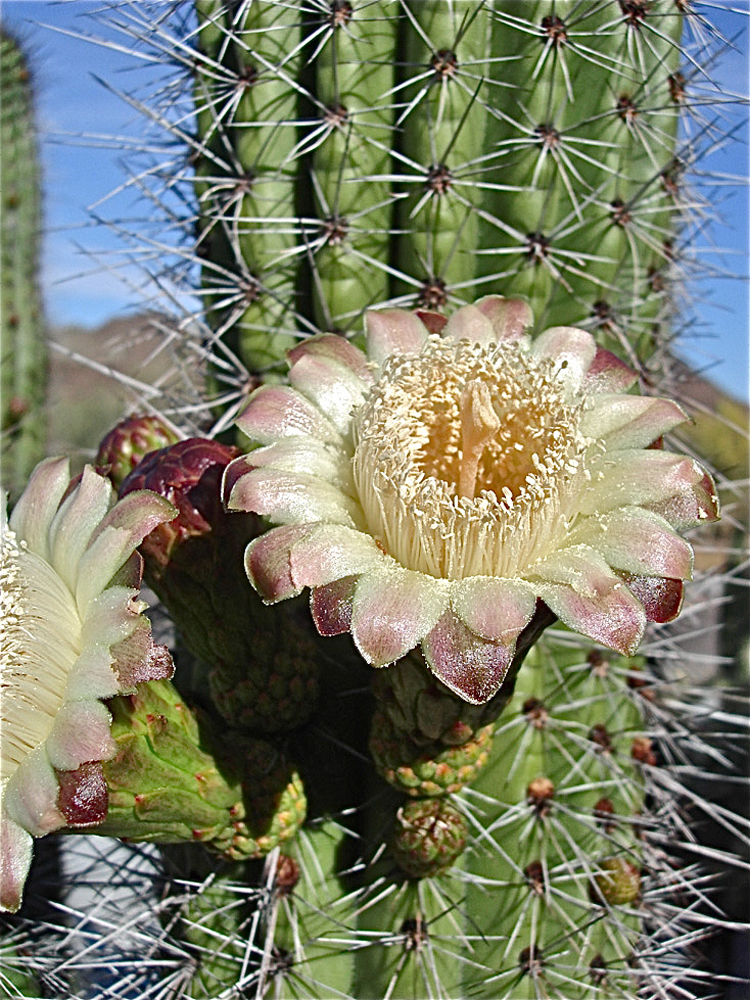
The spectacular bloom shown here is from the Organ Pipe cactus (Stenocereus thurberi). One columnar cactus found only in a small region of the Sonoran Desert, the Organ Pipe cactus produces these beautiful blooms from April through August. The fruit produced by these flowers ripens into a juicy, sweet, red pulp that is a favorite food of both the indigenous people and the animals of the region. (Credit: NPS)
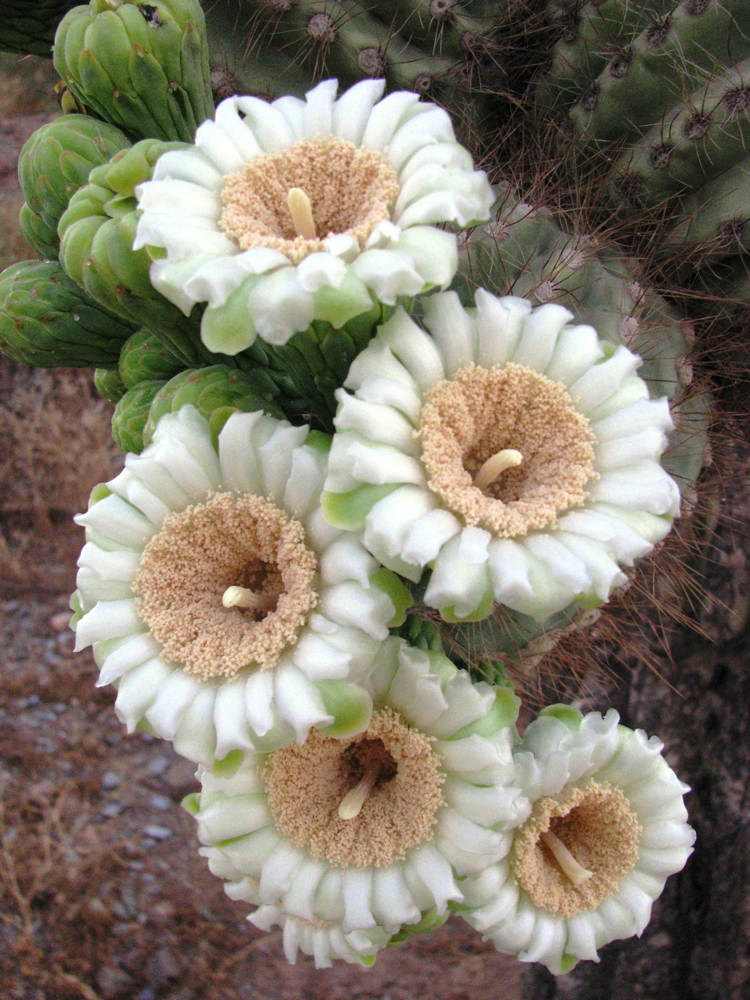
One of the last of the North American desert cacti to begin blooming each spring is the majestic, giant sentinel of the Sonoran Desert, the Saguaro cactus (Cereus giganteus). The beautiful, creamy-white, waxy, 3-inch-wide (8 cm) flowers with their golden-yellow centers make for a spectacular display across the barren Sonoran Desert landscape. Saguaros typically bloom in May and June, and their fruits ripen in late May through early July, providing much-needed food and moisture for desert creatures during the time of year when the Sonoran Desert receives little to no rain. (Credit: Linda & Dr. Dick Buscher)
Follow us @livescience, Facebook & Google+.









